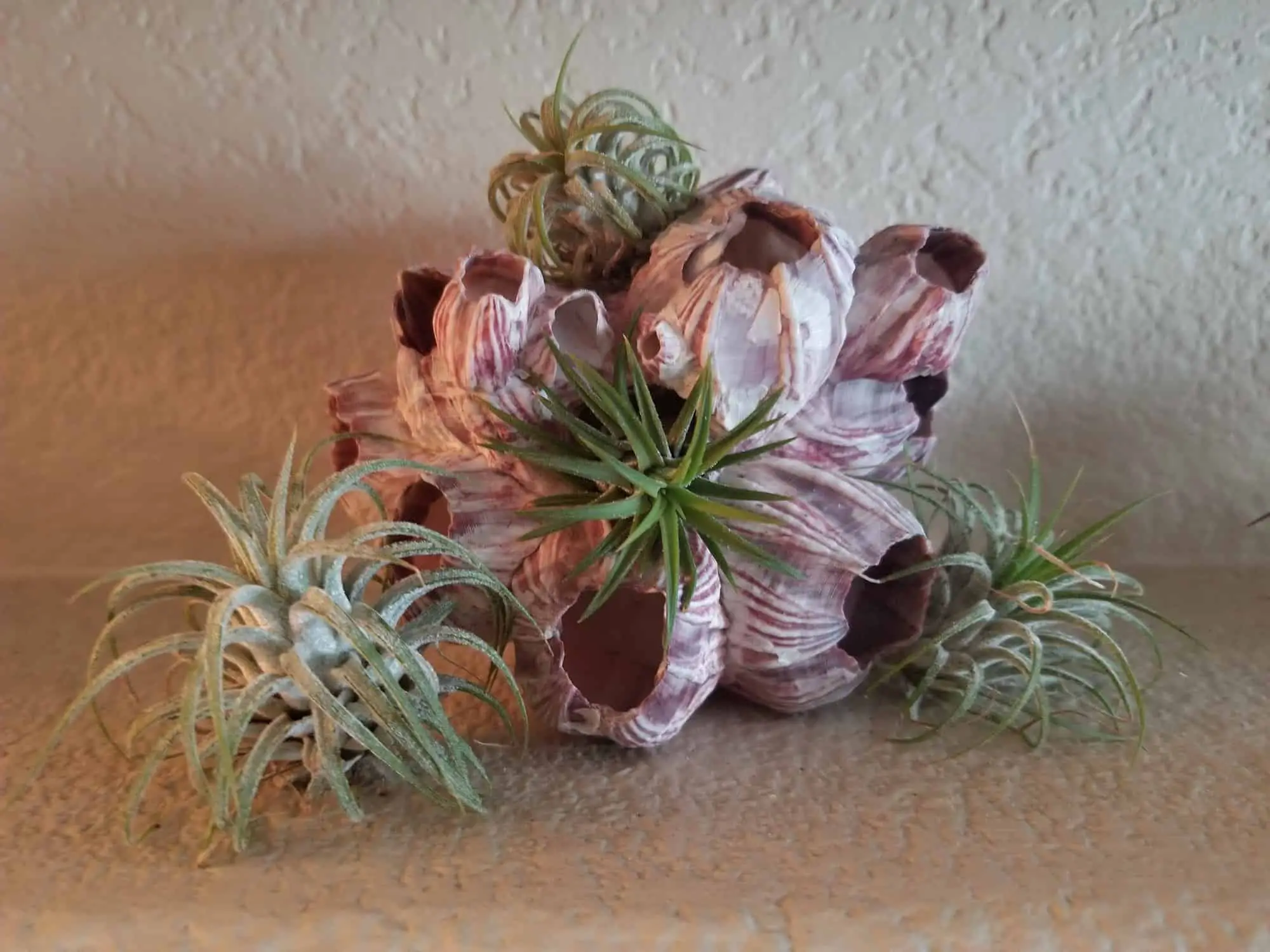Air plants have become increasingly popular. And it is easy to see why. There are numerous creative ways to display air plants. They look stunning in a variety of containers, terrariums, or as hanging decor. Air plants are often touted as a low maintenance plant that is perfect for people who lack a “green thumb.” Although this may be debatable, air plants do require relatively infrequent waterings and do not need to be planted in soil.
What Are Air Plants?
The term air plant refers to the group of plants that belong to the Tillandsia genus which is comprised of about 650 species of plants. This makes it the largest genus of the Bromeliaceae family.
Although they are highly sought after because of their unique shapes and textures, air plants do bloom flowers. However, it takes most species several years to bloom.
In the wild, The majority of Tillandsias (97.7%) are epiphytes which means they attach themselves on trees, rocks, and other surfaces rather than growing in soil. Air plants are not parasitic, so they do not extract nutrients from their host. Rather, they absorb water and nutrients from the air. Tillandsias are not the only epiphytic plants.
1. Tillandsia xerographica

This air plant is often called the King of the Air Plants due to its large size. Tillandsia xerographica is native to Central America. Specifically, they are native to Mexico, Guatemala, and Salvador. In the wild, xerographica plants can be found growing the highest branches.
This species of air plant is so popular that it nearly went extinct during the 1980’s. During that time, the air plant trade was not heavily regulated, so people were able to trade xerographica (and other tillandsias) taken directly from the wild. Thankfully, the Convention on International Trade in Endangered Species of Wild Fauna and Flora (CITES) put the Tillandsia xerogrpahica on the endangered species. This resulted in stricter regulations on the air plant trade.
Tillandsia xerographica takes a long time to grow. The smaller xerographica plants that you see in stores are typically between 4 and 5 years old. In the wild, it takes xerographica plants between 12 and 18 years to bloom. However, cultivated varieties are often smaller and will bloom within 6 to 8 years with the help of fertilizers. They will begin to grow pups 5 to 12 months after blooming. Most xerographica plants produce 1 to 3 pups.
2. Tillandsia ionantha
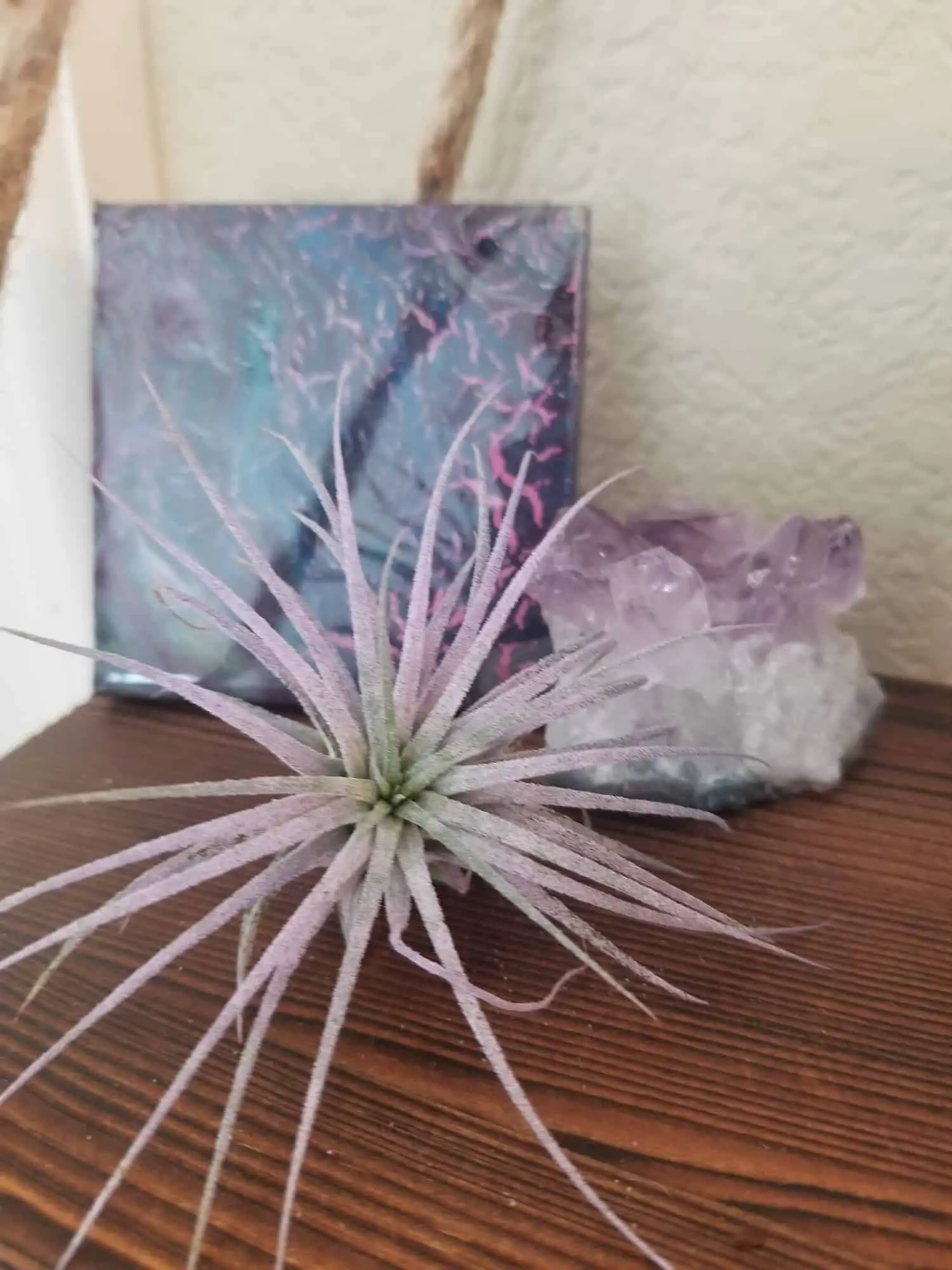
Tillandsia ionantha is probably the most popular and widely available air plant. It is sometimes called the Blushing Bride or Sky Plant. These plants are considerably smaller than the Tillandsia xerographica. On average, the ionanthas sold at more gardening centers and grocery stores will be between 1 and 3 inches.
The Tillandsia ionantha is native to the tropical forests of Mexico, Costa Rica, Nicaragua, El Salvador, Guatemala, and Honduras. You can also find them growing in the wild in certain parts of Florida.
One of the most exciting parts of owning an ionantha plant is seeing it bloom. These plants produce little purple flowers. You will know when an ionantha is about to bloom because it will start to “blush” or turn red.
You can also find purple ionanthas at specialty gardening centers or on Etsy. These air plants are referred to as “purple enhanced” ionanthas. Enhanced means that the air plant was dyed or painted. Personally, I don’t mind purchasing a spray-painted air plant occasionally if it looks nice. However, it is important to keep in mind that a painted air plant may not live as long as an unpainted air plant. Paint reduces the plant’s ability to absorb nutrients from the air.
3. Tillandsia andreana
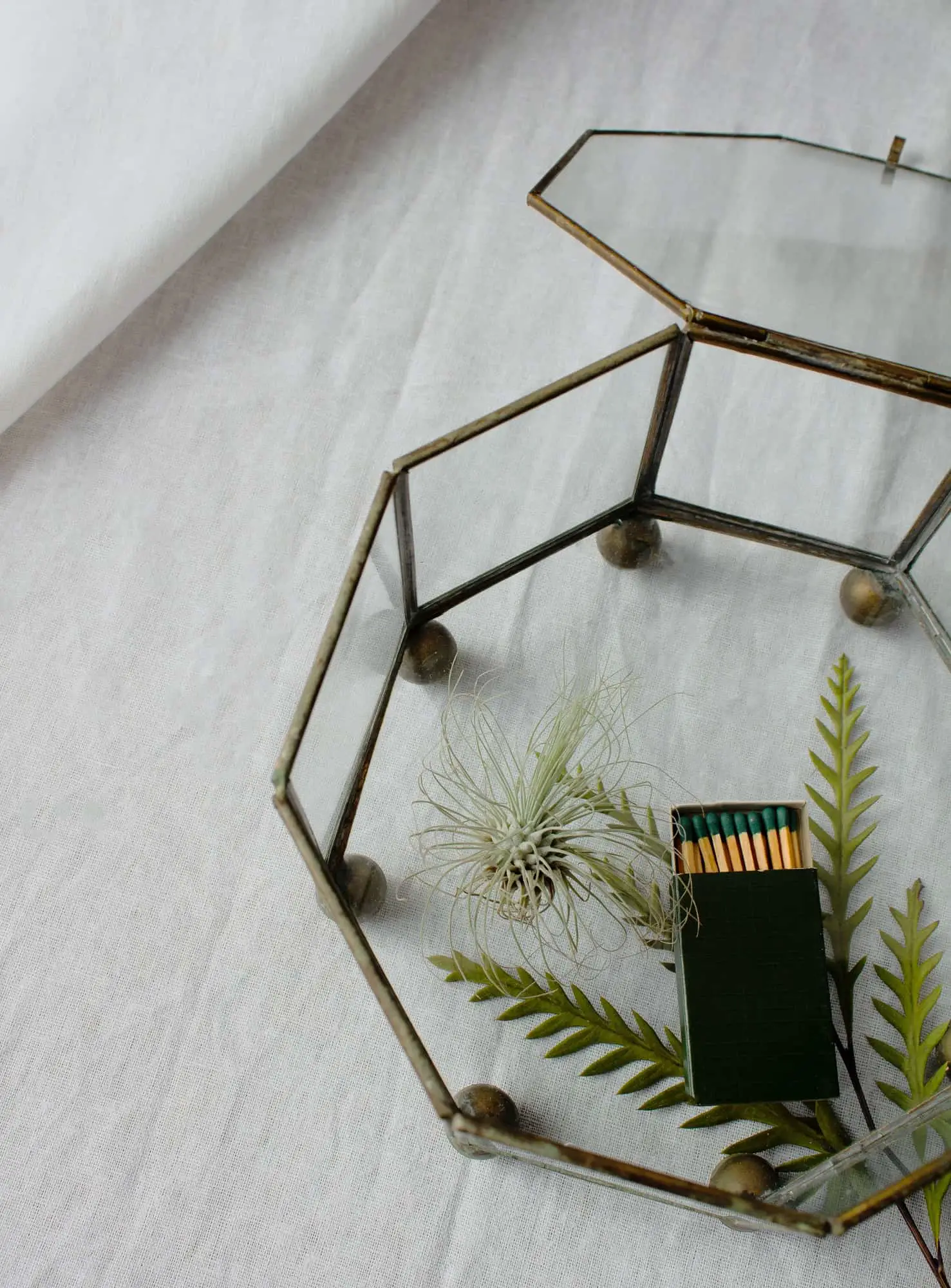
The Tillandsia adrenana has needle-like leaves that give it a wispy appearance. This air plant is native to Colombia and Venezuela where they can be found growing on rocks and cliffs. They are rare in their native habitat and are not always easy to find. I recommend going to a specialty shop or ordering them online.
Tillandsia adrenana are smaller air plants that grow to be about 4.5 inches tall. There are cultivars such as Tillandsia adrenana Superior that will get larger than that. When the plant is ready to bloom, the leaves will turn a red tinge. The flowers are a bright red color. After it blooms, tiny pups will begin to form around the base of the leaves. Eventually, this process results in a clump of air plants.
These air plants are hardy and enjoy a lot of light. However, exposure to too much hot, bright light can cause them to burn. They can be kept outdoors during the summertime as long as you do not place them directly in the sun (Note: these plants do not like temperatures below 40°F). However, Tillandsia adrenana also adapts well to indoor conditions as long as they have enough exposure to filtered light.
4. Tillandsia tectorum

Tillandsia tectorum is probably my favorite type of air plant. This air plant has a fluffy appearance due to the high density of trichomes. Trichomes are tiny appendages found on leaves of air plants. They are similar to hair or scale. Trichomes serve many purposes, but their main job is to absorb water and block harmful solar radiation.
These air plants are native to the Andes Mountains in Ecuador and Peru. In the wild, they can be found growing as lithophytes (growing on rocks) at elevations between 3,000 and 8,200 feet. You can find them growing in rugged conditions next to cacti and agave.
Tillandsia tectorum produce delicate, pink flowers with purple bracts. Because these air plants are found in a wide range of elevations, they will vary significantly in size.
Tillandsia tectorum definitely require less water than many other types of air plants. Unlike other species of tillandsia, these air plants do not like to be submerged in water. They thrive on a thorough misting every couple of weeks. During the winter, I only water these air plants once every two months.
5. Tillandsia caput-medusae
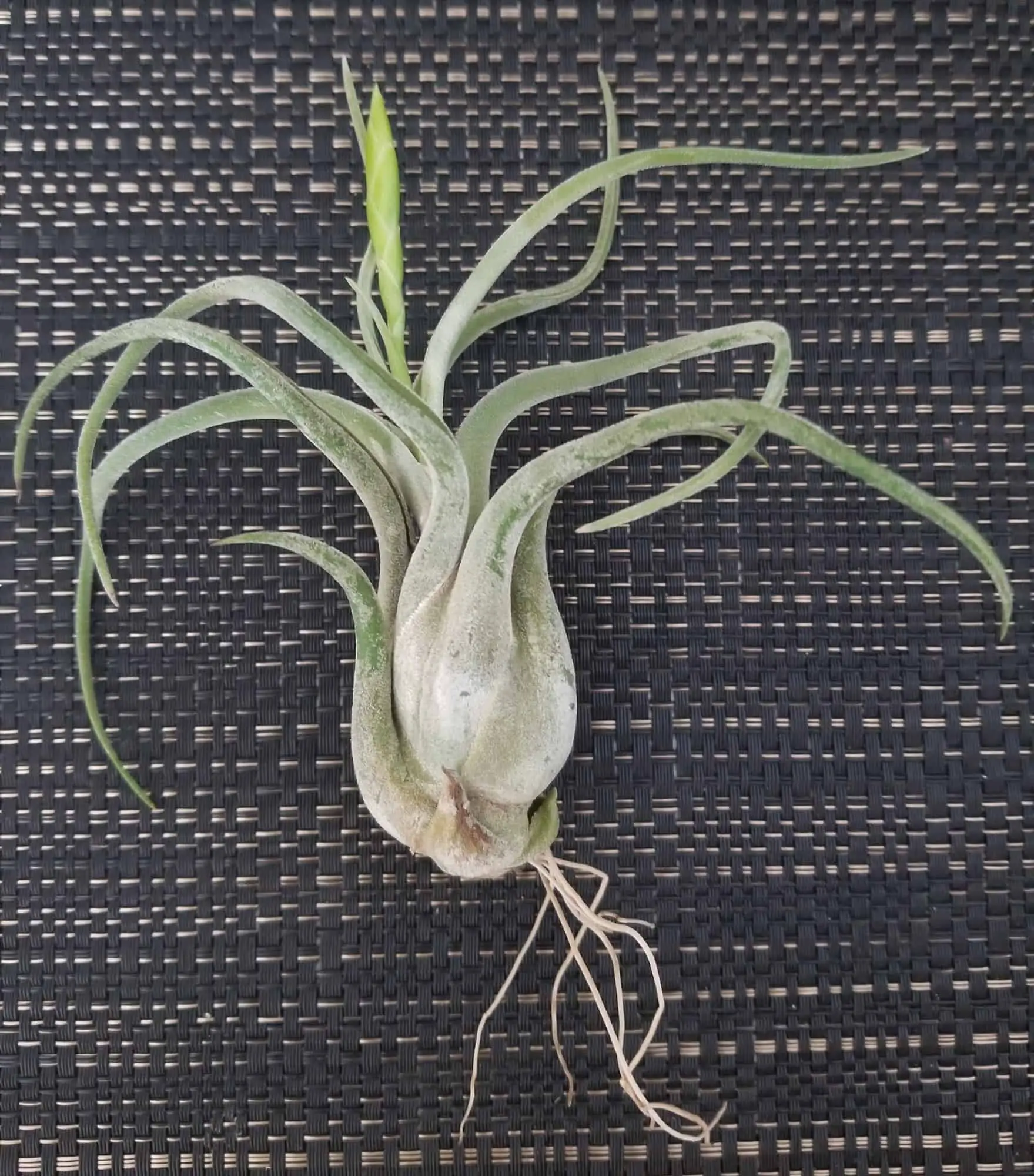
Tillandsia caput-medusae is native to Central America and Mexico. In the wild, they grow on tree branches that are exposed to a lot of sunlight. Most of these air plants are green, but there are some rare varieties that have a silver appearance due to a higher density of trichomes.
Tillandsia caput-medusae get their name from Medusa, who is a monster from Greek mythology, that has snakes in place of hair.
These tillandsias are xeric air plants. This means they are adapted to dry, arid climates. As a result, they require less water than other species of air plants. Like the tillandsia tectorum, tillandsia caput-medusae do not like to be submerged in water. They prefer to be misted every couple of weeks.
When the Tillandsia caput-medusae is about to blossom, the center leaves will turn pink. Multiple red and yellow flower bracts will grow from the center. These bracts will bloom purple and white flowers. After blooming, pups will begin to grow at the bottom of the plant.
6. Tillandsia usneoides
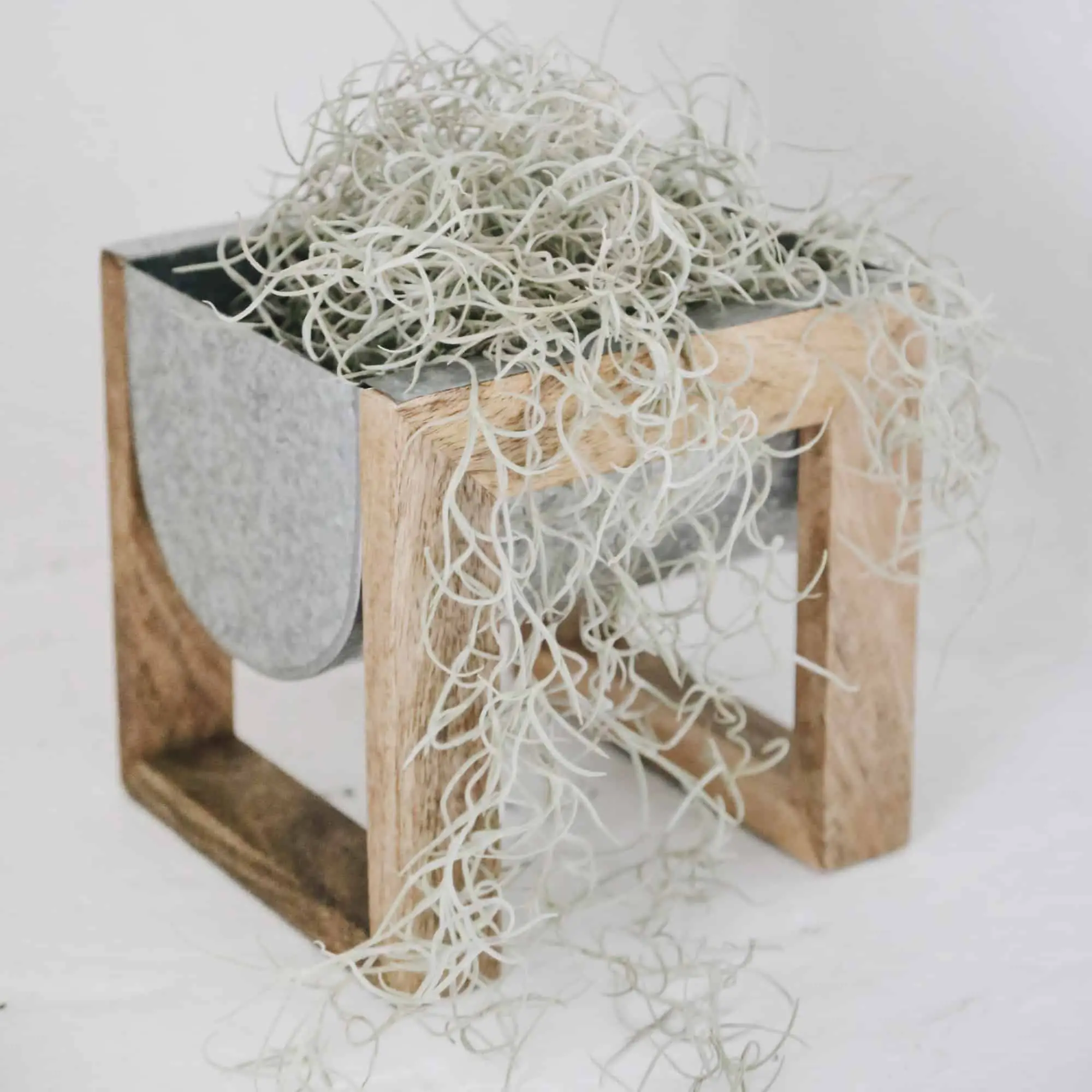
Tillandsia usneoides, which is also known as Spanish Moss, is another popular air plant. Ironically, this plant is not a moss and it is not from Spain. Tillandsia usneoides was given the name “Spanish Moss” by French explorers because the plant resembled the Spanish conquistadors’ long bears.
Unlike other species of air plants on this list, this air plant grows as a fibrous, rootless string of silvery plant material. As such, this air plant is typically displayed by draping it over something. Spanish Moss is a good addition to any tillandsia collection because it can be easily displayed next to other air plants.
This air plant is native to the tropical and subtropical climates of Mexico, Bermuda, the Bahamas, Central America, South American. It also grows in some parts of the southeastern United States. You can find Spanish Moss growing on the trees in Charleston, SC, Savannah, GA, and New Orleans.
In the wild, Spanish Moss propagates by seed and by fragments of plant material. You can propagate Spanish Moss in your home by detaching a few strands and wiring them to a piece of cork.
7. Tillandsia juncea
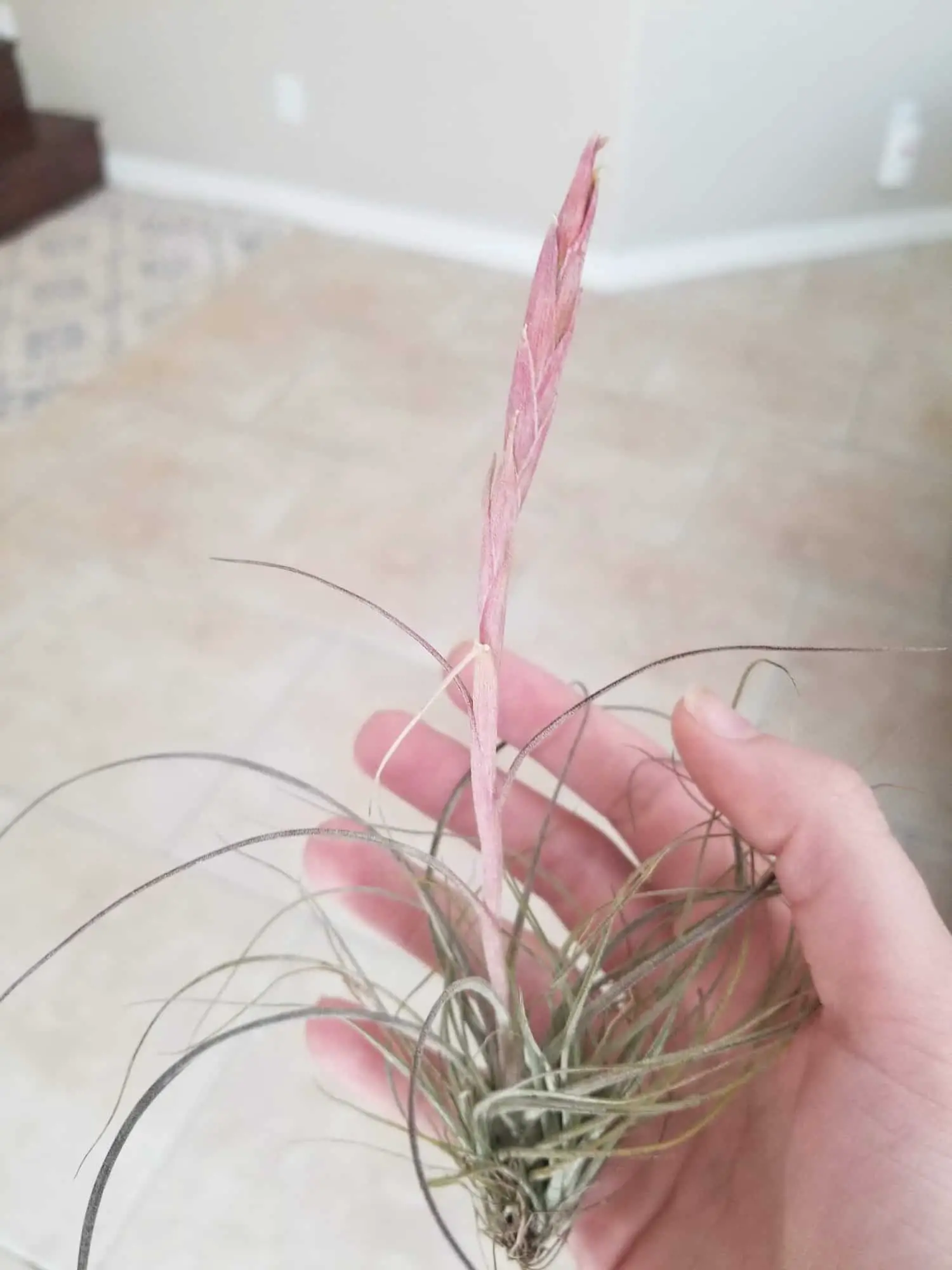
Tillandsia juncea is popular for its grass-like appearance. It can grow to a height of 20 inches. I like to put my juncea plants in a long, narrow vase, but they also look nice in a hanging air plant holder.
Tillandsia juncea is native to the tropical areas of Central America and South American. They are typically found at altitudes of 7,900 feet in Colombia, Venezuela, Ecuador, Peru, Bolivia, Brazil, Cuba, Jamaica, and Trinidad.
These air plants do like to be watered more frequently and do well when soaked in water once per week. During the winter months, only water once every couple of weeks. After watering a juncea plant, make sure that you place it in area where it can dry quickly.
They will do best in an area that receives good airflow and is a bit humid. I display my juncea plant in a bathroom that receives a lot of natural sunlight.
8. Tillandsia butzii
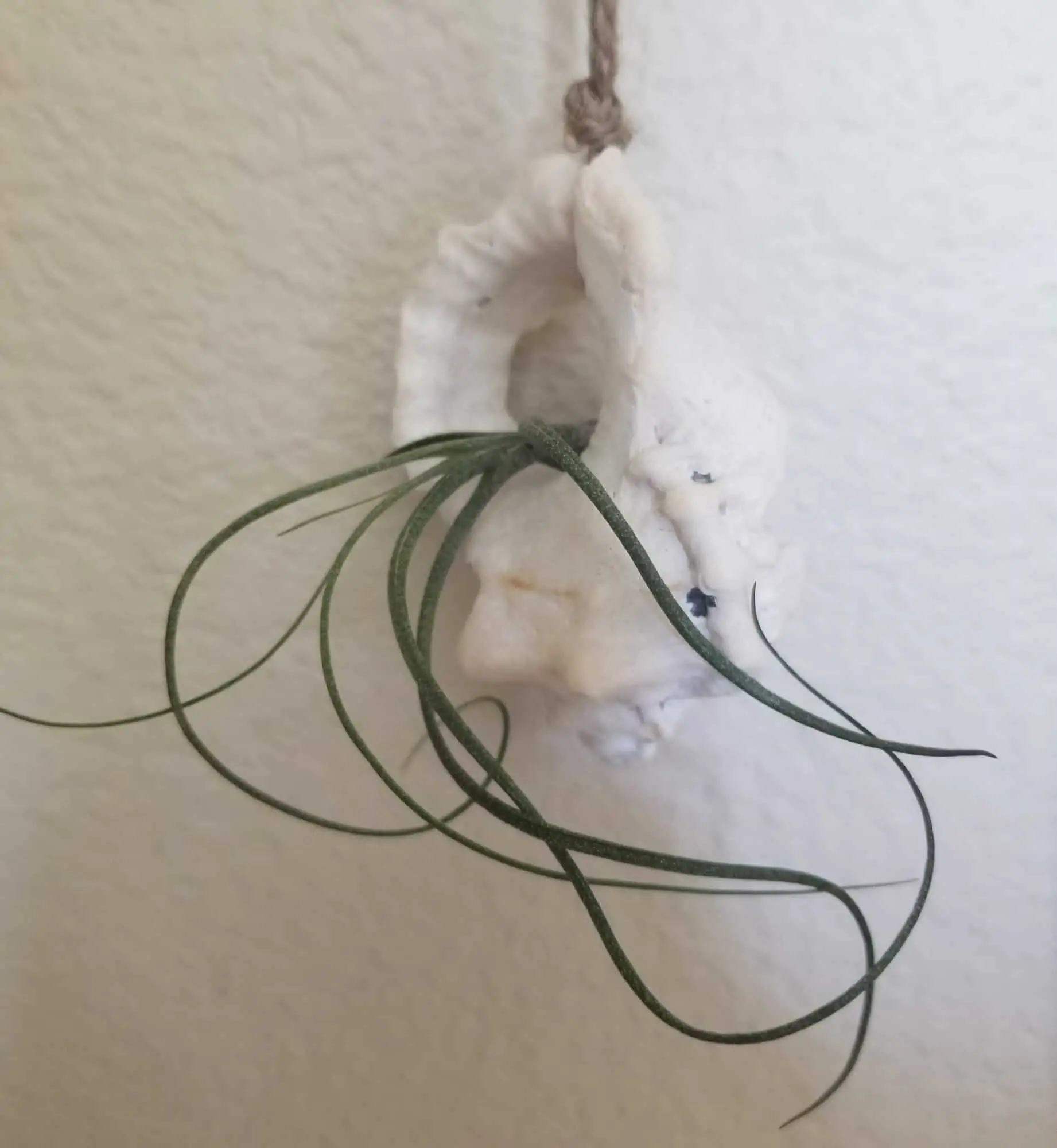
Tillandsia butzii is a unique species of air plant that has wiry leaves and a bulbous base. Unlike many other species of air plants, the leaves do not have a fuzzy texture. The leaves of a butzii plant are actually smooth and will form beautiful curls. These tillandsias look nice mounted on a piece of driftwood or hanging upside down.
Tillandsia butzii is native to southern Mexico, Costa Rica, and Panama. They are typically found at altitudes ranging from 1250 to 2200 meters. In the wild, the bulbous base acts as space for ants to colonize. The butzii plant will absorb nutrients from the detritus of the ants.
I water my butzii plants by misting them or dipping the leaves in a bowl of water. I do not soak the whole plant because water can easily get trapped in the compact leaves at the base which can cause rot. If you do soak the whole plant in water, gently shake the butzii plant after you remove it from the water. Then make sure you hang your butzii plant upside down while it dries.
9. Tillandsia harrisii
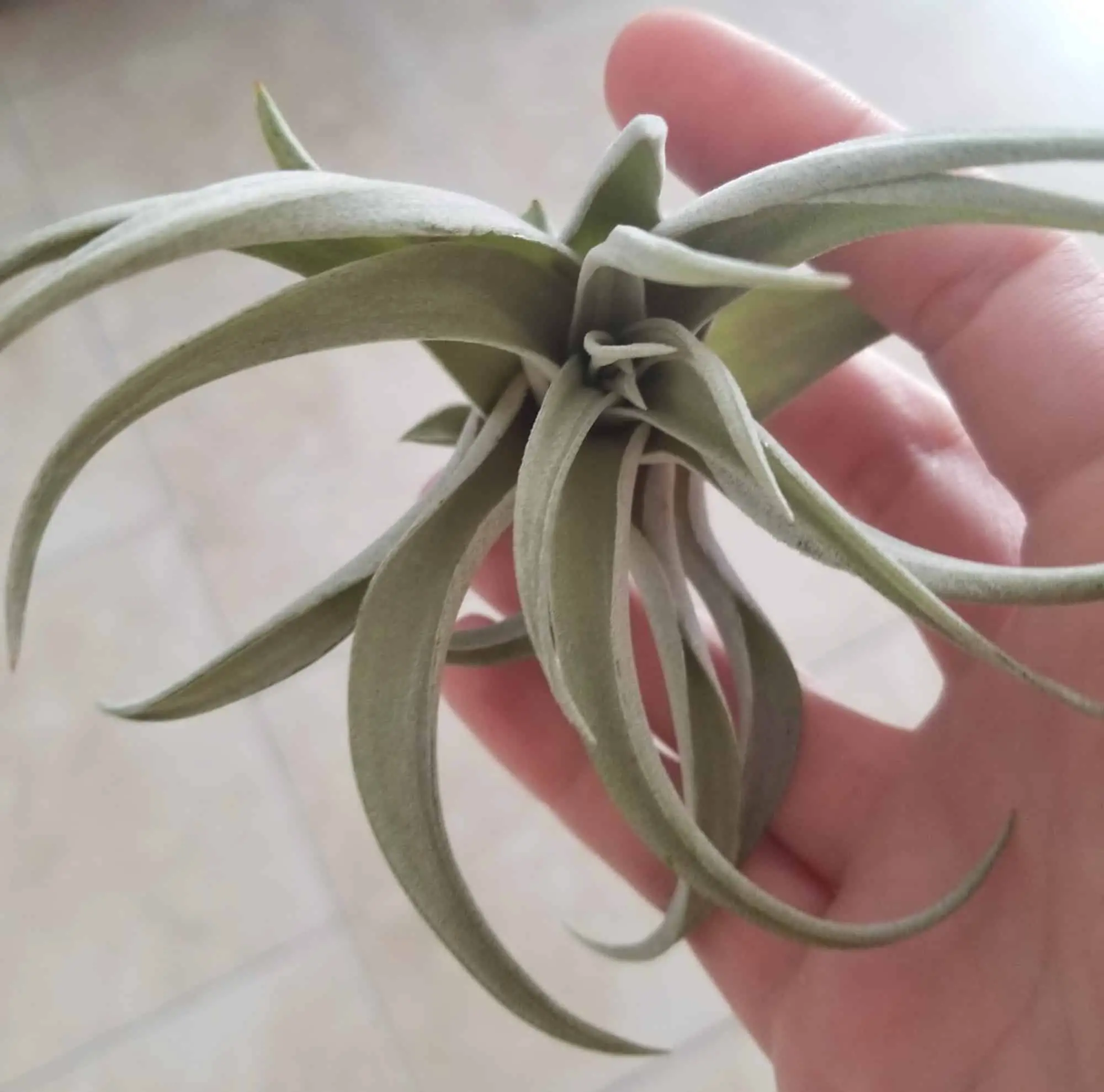
Tillandsia harrisii is a type of air plant with fuzzy, silver leaves. It is a good variety of air plant for first-time air plant owners because it is very forgiving of mistakes.
This air plant is native to Guatemala. In the wild, they are found at altitudes between 0 to 500 meters above sea level. This species of air plant was named for Bill Harris who was a Canadian business consultant who started the first tillandsia exporting business in Guatemala during the 1970s. Tragically, Bill Harris was murdered in February 1986.
The harrisii plant will eventually bloom beautiful pink and purple flowers. The bloom will typically last between two and three weeks.
Tillandsia harrisii does best in bright indirect light. However, it can withstand some full sun. They also do best in environments with low to moderate humidity.
10. Tillandsia stricta

Tillandsia stricta does well indoors and is one of the more widely available types of air plants. The leaves of the Tillandsia stricta can be soft or stiff depending on the plant. This is because stricta plants have adapted to survive in a variety of environmental conditions.
Tillandsia stricta is native to Trinidad, Brazil, Venezuela, Paraguay, Uruguay, Guyana, and northern Argentina. In the wild, they can be typically found growing on sand dunes or in trees.
This air plant typically matures during the summer months and will produce a white spike that will eventually bloom blue or purple flowers. Unlike other types of air plants, these flowers will only be around for one day! After a stricta plant blooms, it will typically produce one to three pups.
11. Tillandsia cyanea (Pink Quill)
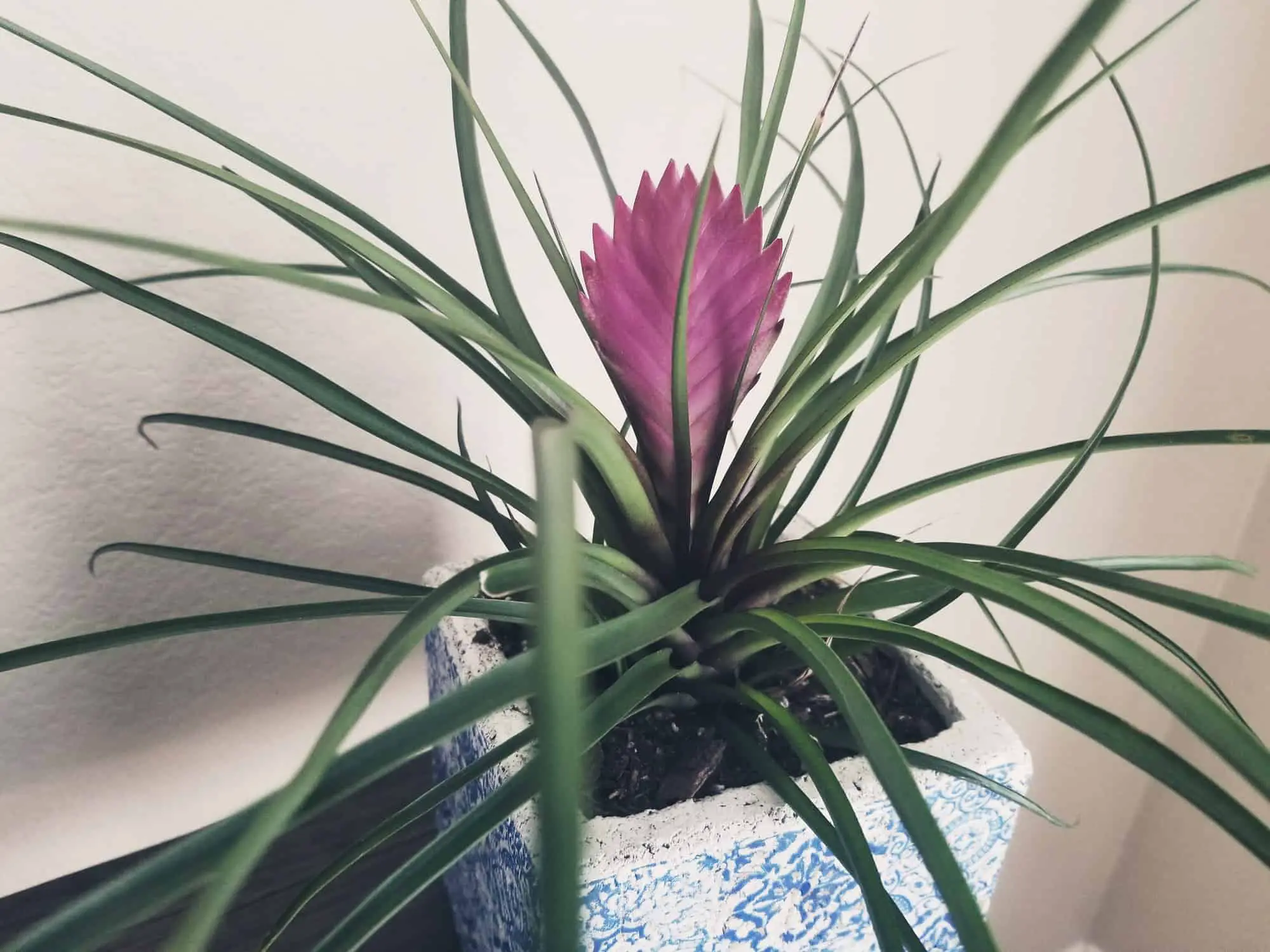
Tillandsia cyanea, also known as Pink Quill, is native to the tropical regions of Ecuador and northern Peru. They are typically found at elevations between 2,000 and 3,500 feet above sea level. In the wild, these plants grow well in a variety of lighting conditions. This means they can be found in the treetops where there is exposure to a lot of sunlight or under the shade of other trees.
Pink Quills certainly has a unique appearance, but they actually have a “look alike.” Tillandsia lindennii looks very similar to the Pink Quill, but they are a bit larger. Pink Quill will grow to a height of 10-12 inches. In contrast, the Tillandsia lindennii will grow taller than 16 inches.
Another thing that makes the Pink Quill unique among tillandsias is that they actually prefer to be planted in a growing medium to growing epiphytically. Although they can grow epiphytically, Pink Quill will develop a more robust root system if planted in soil.
Like other air plants, Pink Quill will eventually develop pups. It is not uncommon for these plants to produce up to 10-12 offshoots. However, this can take several years.
If you want to learn more about Pink Quill, check out my article about how to care for a Pink Quill plant.

